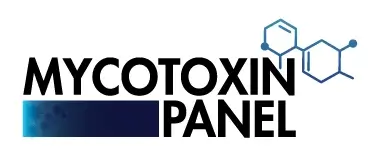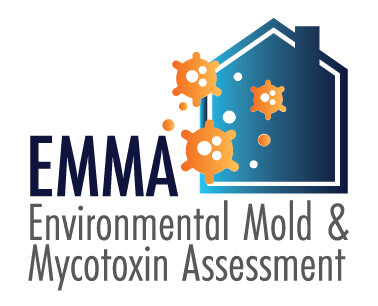Comprehensive Solutions for Your Mycotoxin testing Services Requirements
Comprehensive Solutions for Your Mycotoxin testing Services Requirements
Blog Article
Why Mycotoxin Testing Providers Are Vital for Protecting Public Health And Wellness
The importance of mycotoxin screening services in securing public health can not be overstated. Mycotoxins, toxic compounds produced by fungis, pose major wellness dangers such as liver damages and cancer when present in food and feed. By recognizing and mitigating these risks through normal screening, we can prevent polluted products from reaching consumers. This not only makes sure conformity with strict regulative standards yet likewise boosts consumer self-confidence and preserves the stability of the agricultural market. Recognizing the devices and advantages of these testing solutions opens an essential conversation about their function in public health and wellness security.
Comprehending Mycotoxins
Comprehending mycotoxins is vital for making sure food safety and safeguarding public health and wellness. Mycotoxins are harmful compounds generated by specific types of fungis, commonly located in food and feed crops. These fungi can proliferate in a variety of problems, specifically in humid and warm environments, resulting in contamination throughout pre-harvest, storage, or processing stages. The most widespread mycotoxins consist of aflatoxins, ochratoxin A, fumonisins, and trichothecenes, each with distinct chemical structures and toxicological homes.
The presence of mycotoxins in foodstuffs can compromise their safety and top quality. They are resistant to standard food processing techniques, thus persisting in the food supply chain and posing possible dangers. Regulative bodies worldwide, such as the Food and Farming Company (FAO) and the World Health And Wellness Organization (THAT), have established strict restrictions on appropriate degrees of mycotoxins in food to reduce their adverse effects.
Efficient mycotoxin administration involves thorough tracking and screening to discover and measure their degrees in agricultural items. This proactive strategy aids in determining infected sets early, thus avoiding their introduction right into the market. Implementing strict mycotoxin controls is essential for keeping food security requirements and guarding customer wellness.
Health Threats of Mycotoxins

Exposure to mycotoxins positions significant wellness dangers to both animals and people, necessitating cautious monitoring and control actions. These toxic additional metabolites, created by particular fungi, can infect food and feed, leading to persistent and acute health issues. In people, mycotoxins such as fumonisins, ochratoxins, and aflatoxins can trigger a range of negative impacts, consisting of liver damages, kidney toxicity, immune suppression, and also carcinogenic effects. Aflatoxins have been categorized as Team 1 carcinogens by the International Firm for Study on Cancer Cells (IARC), showing a tried and tested link to liver cancer.

Provided these serious wellness consequences, it is critical to implement robust mycotoxin screening methods. Accurate detection and quantification of mycotoxins in food and feed are important to reduce health and wellness risks and make sure public and animal safety.
Usual Sources of Contamination

Along with grains, nuts such as almonds, pistachios, and peanuts are very vulnerable to mycotoxin contamination. Aflatoxins, a powerful type of mycotoxin, are commonly found in these nuts, particularly when storage conditions are suboptimal. Dried out fruits, consisting of apricots, figs, and raisins, likewise present productive grounds for fungal development as a result of their high sugar web content and moisture-retaining residential or commercial properties.
Additionally, contamination is not limited to raw farming items. Processed foods, pet feeds, and milk items can likewise consist of mycotoxins if the initial components were contaminated. This expands the threat of direct exposure throughout the food supply chain, requiring stringent surveillance and control actions.
Understanding the typical sources of mycotoxin contamination is critical for applying efficient preventative approaches. Mitigating these risks at the resource can dramatically minimize the occurrence of mycotoxin-related wellness issues, protecting public health.
Testing Protocols and approaches
Advanced logical strategies are utilized to discover and evaluate mycotoxins in numerous substratums, guaranteeing public health safety. High-Performance Fluid Chromatography (HPLC) paired with mass spectrometry (MS) is a gold standard in mycotoxin screening, supplying high level of sensitivity and uniqueness.
One more commonly utilized technique is Enzyme-Linked Immunosorbent Assay (ELISA), which offers fast testing and is affordable for huge example volumes - Mycotoxin testing Services. ELISA packages are useful because of their simplicity of usage and fast turnaround time, making them appropriate for on-site screening
Experiencing methods are similarly essential. Correct tasting makes certain that the collected specimens are depictive of the entire batch, consequently lessening the threat of incorrect downsides or positives. Adherence to established guidelines, such as those offered by the International Organization for Standardization (ISO) and the European Board for Standardization (CEN), is important for maintaining uniformity and reliability across testing techniques.
Rigorous recognition of these techniques and protocols is indispensable. It guarantees reproducibility and accuracy, consequently strengthening the honesty of mycotoxin management systems.

Advantages of Routine Examining
In the realm of food security and agricultural high quality control, the benefits of regular mycotoxin screening can not be overstated. Regular testing makes click reference certain that agricultural products meet safety standards, thereby protecting customers from the harmful impacts of mycotoxins, that include liver damages, immune reductions, and also cancer. By determining infected sets early, regular testing permits prompt intervention, preventing such items from click this site entering the food cycle.
Moreover, normal mycotoxin testing is essential for keeping the stability and track record of food manufacturers and providers. Companies that devote to routine screening show their devotion to public wellness and food safety and security, therefore gaining consumer trust fund and commitment. This positive strategy can also reduce economic losses connected with product recalls, lawful obligations, and prospective profession constraints.
Regular mycotoxin testing ensures adherence to worldwide and national guidelines, facilitating smooth profession operations and market access. Eventually, routine mycotoxin testing not only shields public health yet also strengthens the economic stability and global competition of the agricultural market.
Final Thought
Mycotoxin testing services play an essential function in public health protection by identifying and minimizing the threats positioned by poisonous fungal substances in food and feed. By spotting contamination early, these solutions protect against major health concerns such as liver damages and cancer, making sure compliance with regulatory standards. Routine screening improves customer trust, supports the stability of the farming sector, and ultimately contributes to the protecting of food security and public health and wellness.
The relevance of mycotoxin screening solutions in securing public wellness can not be overemphasized.Comprehending mycotoxins is critical for making certain food safety and securing public health. Mycotoxin testing Services. Regulatory bodies worldwide, such as see this website the Food and Agriculture Organization (FAO) and the Globe Health And Wellness Organization (WHO), have set stringent restrictions on appropriate degrees of mycotoxins in food items to minimize their damaging impacts
Eventually, normal mycotoxin screening not only safeguards public health yet also fortifies the financial stability and global competitiveness of the farming industry.
Mycotoxin screening services play a critical role in public health and wellness protection by identifying and mitigating the risks presented by harmful fungal substances in food and feed.
Report this page